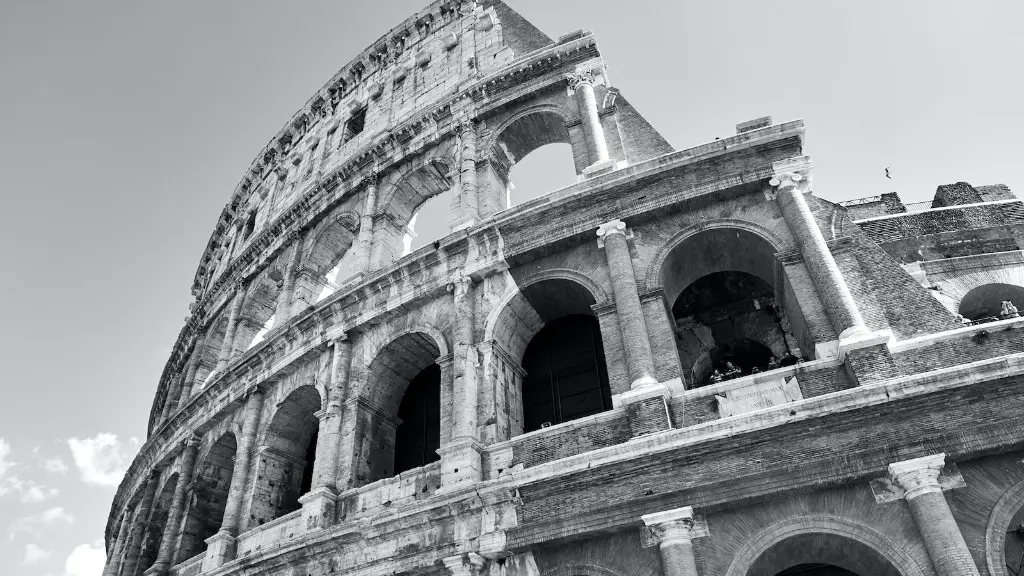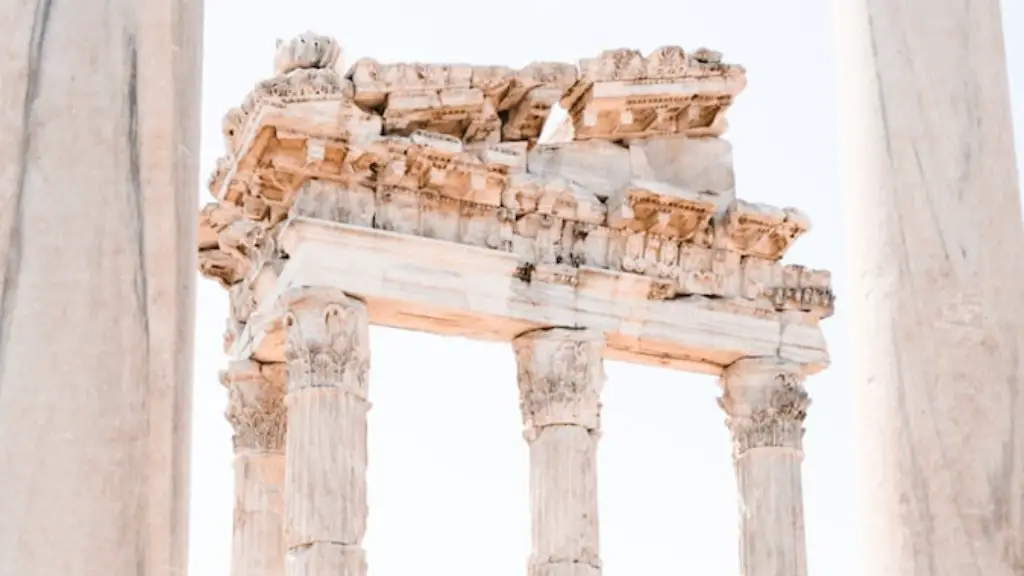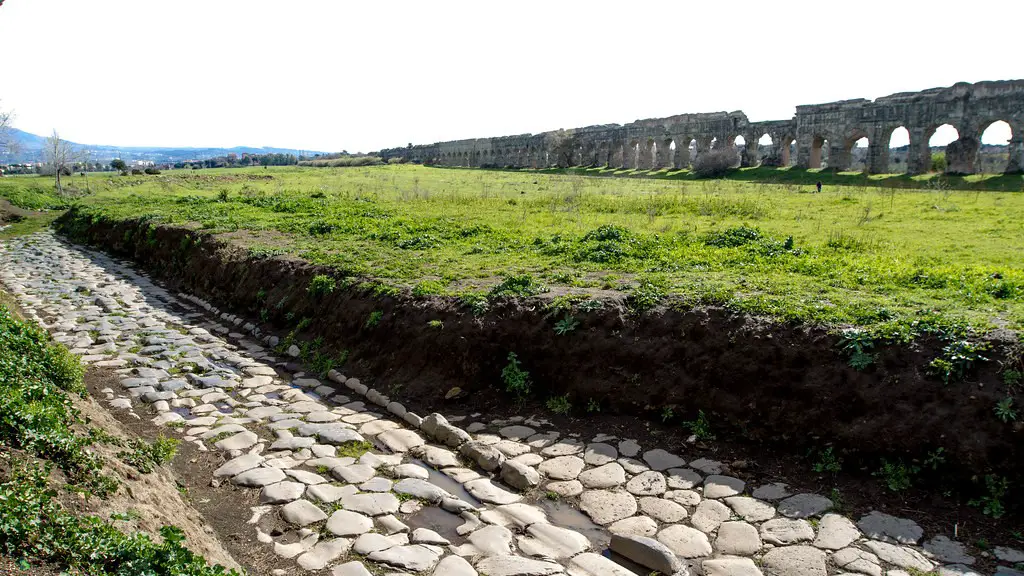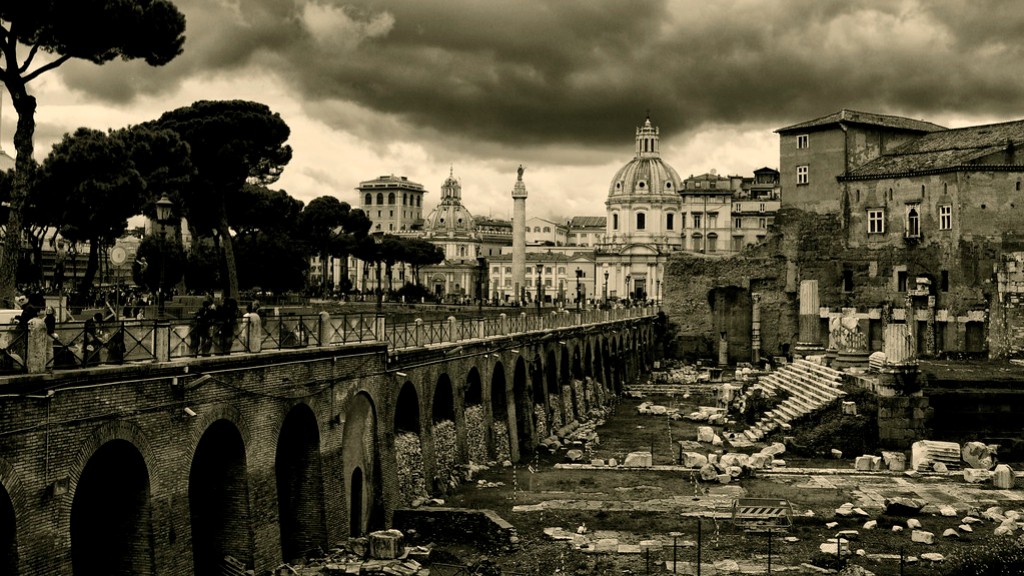The decline and fall of ancient Rome is one of history’s great mysteries. Who exactly destroyed it? For centuries historians have debated the factors that led to the fall of Rome, but the answer to that question still remains elusive today.
Ancient Rome was a prosperous and powerful city state, and its decline and fall was a complex, multi-layered process sparked by a range of internal and external forces. There were invasions by barbarians, social and economic decline, as well as high levels of corruption and nepotism.
In the fourth century CE the Roman Empire was divided in two and was struggling to defend its northern and eastern frontiers against barbarian invasions. The army was badly weakened, and in 410 CE Rome was sacked by Visigoth leader Alaric I, bringing an end to the Western Roman Empire. This led to a period of instability as various rulers fought for control over the remnants of the Empire.
In the fifth century CE a new wave of invaders swept across Europe, the Huns. They were a nomadic tribe from Central Asia and led by their fearsome leader, Attila the Hun. They were a formidable force, plundering and destroying towns and cities as they advanced. In 452 CE they laid siege to Rome, but due to the efforts of Pope Leo I, the city was spared.
In 455 CE Rome was sacked by the Vandals, another barbarian tribe, who looted and pillaged the city. This event marked the end of the Roman Empire as a political entity. The fall of Rome also brought an end to the Roman way of life and ushered in a period of political and economic decline.
The decline of Rome was attributed to a combination of internal and external factors, but the invasion of barbarian tribes played a major role in its downfall. The hordes of Attila and the Vandals weakened the morale of the population, destabilised the army and government, and caused widespread destruction.
The fall of Rome was not only an important moment in history, it was also a powerful symbol of the fragility and mortality of civilisations. It is a reminder that our own societies and institutions can unravel in unexpected and dramatic ways if we fail to address their underlying issues.
Social and Economic declince
The decline of Rome was both social and economic. Trading across the Empire had slowed down, and the wealthy upper classes stopped investing in public works, bringing an end to the classic period of Roman imperial glory. The wealthy elite were more concerned with enriching their own estates and expanding their political power. They relied on slave labour, which encouraged population decline, and they imposed oppressive taxes on the poor. The number of small farms in the countryside declined, leading to a lack of food production that contributed to the fall of Rome.
The population of Rome also declined during this time. This was partly due to a drop in the birth rate and an increase in deaths due to wars and plagues. The population of Rome fell from an estimated one million in the first century CE to around 400,000 by the fourth century CE.
The military was not immune from the social and economic decline. The once powerful and well-equipped Roman legions were weakened by corruption, patronage and nepotism. The military stopped defending the empire’s borders and was more concerned with private gain than public service.
The central government had stopped functioning properly, and a series of weak and ineffective emperors were more interested in personal gain than ruling their empire. The chaos and instability of the imperial court caused the Romans to lose faith in their leaders and their ability to protect them.
The Decline of the Roman Religion
The Roman state religion had played an important role in helping to unify the empire, but during the decline of Rome it started to lose its grip on the population. People were turning to foreign religions such as Christianity, which was seen as a threat to Roman society.
Christianity was seen as a subversive religion by the Roman authorities, and Christians were persecuted and even executed for their beliefs. This increased hostility towards Christians weakened their support for the Roman state and contributed to its eventual fall.
The Roman gods and goddesses were also losing their power, as people began to question the gods’ ability to protect them. With their faith in the Roman gods waning and their trust in the government dwindling, the population was increasingly losing faith in Rome’s ability to protect them.
The decline of the Roman religion was also closely linked to the rise of Christianity. Christianity had a greater appeal to the population and its teachings offered hope of salvation, while the old state religion emphasized fate and despair.
The decline of the Roman religion, combined with the weakening of the state apparatus and the increasing hostility towards Christianity, contributed to the fall of Rome.
The Barbarian Invasions
The Barbarian invasions of the fifth century CE were arguably the most important factor in the fall of Rome. The tribes were a formidable force and their attacks had a devastating impact on Rome and its citizens. They looted and plundered cities, weakened the morale of the population, and destroyed the political and economic structure of the Roman Empire.
The Barbarian invasions were largely a result of overpopulation and population displacement caused by climate change and famine in the steppes of Central Asia. The tribes were looking for new lands to settle in, and they saw the weakened Roman Empire as a perfect target.
The Barbarian invasions weakened the Roman military and its ability to protect its borders, leading to instability in the empire. The invasions also exposed the weaknesses of Roman society and its lack of effective leadership. The invasions were a major factor in the fall of Rome and its eventual dissolution.
The Legacy of Rome
The fall of Rome was a major turning point in history, but its legacy remains. Many of the ideas and institutions of the Roman Empire still influence us today, from the Latin alphabet to the creation of the global economy. Roman law and its principles of justice, equality and fairness are still used in many parts of the world. Rome’s legacy is an important reminder of the power of civilisation and its ability to influence people, even in the face of devastating forces.
Although Rome has fallen, its influence and power still haunt us today. Its rise and fall is a powerful reminder of how quickly things can change, and of our responsibility to protect what we hold dear.
Conclusion
The fall of Rome remains an enigma, and the debate on its causes will continue to rage. It is clear, however, that a combination of external and internal pressures led to the collapse of the Roman Empire. Social and economic decline, religious upheaval, military weakness and barbarian invasions all played a part. The legacy of Rome, however, is still very much alive today, and its story continues to be an inspiration and a cautionary tale.





